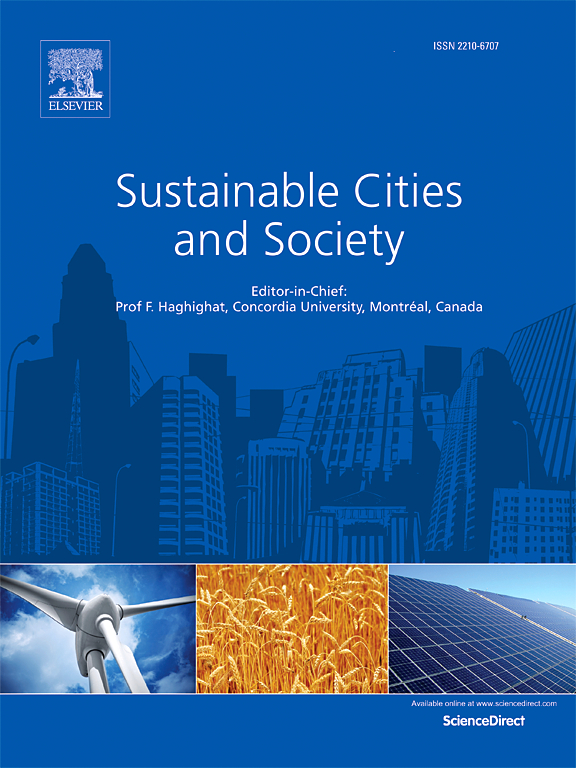Charging station localization and sizing determination considering smart charging strategies based on NSGA-III and MOPSO
IF 10.5
1区 工程技术
Q1 CONSTRUCTION & BUILDING TECHNOLOGY
引用次数: 0
Abstract
The ownership of electric vehicles (EVs) has experienced a significant increase in recent years all over the world. However, the unmanaged and uncontrolled connection of a large number of EVs to the grid poses significant threats to grid stability and may result in heightened carbon emissions. This study introduces a smart charging scheduling method that concurrently takes into account charging costs, grid stability, and carbon emissions for EV users. This method is solved using the Non-dominated Sorting Genetic Algorithm III (NSGA-III). Based on the derived solution, three charging strategies were compared with data from four different countries with different energy structure. Both the total distance cost and total construction cost were considered to determine four options for the localization and sizing of EV CSs. The findings indicate that, in temporal terms, the optimal case for each strategy reduces charging costs, grid peak-valley difference, and carbon emissions by 6.66 %, 42.39 %, and 3.38 %, respectively. In spatial terms, the study elucidates the impact of various charging strategies on the localization and sizing of CSs. This study demonstrates the potential of an innovative method for long-term CS localization and sizing determination to provide direct guidance to management department.
求助全文
约1分钟内获得全文
求助全文
来源期刊

Sustainable Cities and Society
Social Sciences-Geography, Planning and Development
CiteScore
22.00
自引率
13.70%
发文量
810
审稿时长
27 days
期刊介绍:
Sustainable Cities and Society (SCS) is an international journal that focuses on fundamental and applied research to promote environmentally sustainable and socially resilient cities. The journal welcomes cross-cutting, multi-disciplinary research in various areas, including:
1. Smart cities and resilient environments;
2. Alternative/clean energy sources, energy distribution, distributed energy generation, and energy demand reduction/management;
3. Monitoring and improving air quality in built environment and cities (e.g., healthy built environment and air quality management);
4. Energy efficient, low/zero carbon, and green buildings/communities;
5. Climate change mitigation and adaptation in urban environments;
6. Green infrastructure and BMPs;
7. Environmental Footprint accounting and management;
8. Urban agriculture and forestry;
9. ICT, smart grid and intelligent infrastructure;
10. Urban design/planning, regulations, legislation, certification, economics, and policy;
11. Social aspects, impacts and resiliency of cities;
12. Behavior monitoring, analysis and change within urban communities;
13. Health monitoring and improvement;
14. Nexus issues related to sustainable cities and societies;
15. Smart city governance;
16. Decision Support Systems for trade-off and uncertainty analysis for improved management of cities and society;
17. Big data, machine learning, and artificial intelligence applications and case studies;
18. Critical infrastructure protection, including security, privacy, forensics, and reliability issues of cyber-physical systems.
19. Water footprint reduction and urban water distribution, harvesting, treatment, reuse and management;
20. Waste reduction and recycling;
21. Wastewater collection, treatment and recycling;
22. Smart, clean and healthy transportation systems and infrastructure;
 求助内容:
求助内容: 应助结果提醒方式:
应助结果提醒方式:


